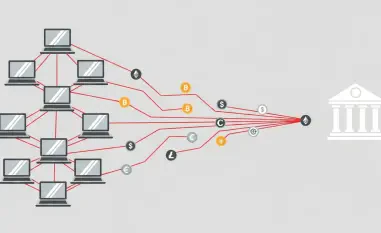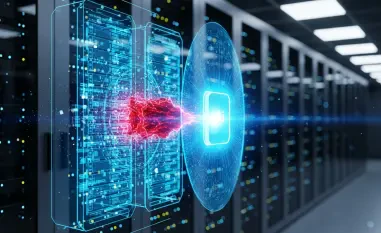The recent ransomware attack on Japanese electronics giant Casio has underscored the persistent vulnerabilities even well-established companies face in today’s digital landscape. This breach not only compromised sensitive personal and company data but has also been linked to a sophisticated cybercriminal group with possible state affiliations. The attack highlighted a growing trend of organized cybercrime that targets prominent businesses, and it revealed deep-seated concerns around global cybersecurity defenses.
Unveiling the Breach: Initial Disclosure and Confirmation
Casio first disclosed the ransomware attack on October 7, raising alarms across the business and cybersecurity communities. A subsequent statement from the company confirmed the breach’s nature and extent, revealing that sensitive data of employees, contractors, business partners, and interviewees had been compromised. Critical company data, including invoices, human resources files, and technical information, were also accessed. While customer data was affected, the specific types and the number of individuals impacted remained undisclosed, with credit card information notably spared.
The revelation underscored the significant operational disruptions resulting from the attack, with some of Casio’s systems rendered unusable. The company’s immediate focus turned to investigating the full extent of the breach and restoring affected systems, aligning with common post-attack practices of containment and assessment. The challenge for Casio now lies not only in addressing the immediate fallout but also in shoring up defenses to prevent future incidents of a similar nature.
The Culprits Behind the Attack: Who is Underground?
Claiming responsibility for the cyberattack was the ransomware and extortion group known as Underground. This group emerged on the cyberattack scene relatively recently, in June 2023, but quickly gained notoriety. TechCrunch validated Underground’s claims by examining published samples of the stolen data, adding credibility to the group’s involvement. This swift rise to prominence signifies the evolving and increasingly audacious nature of cybercriminal enterprises that leverage stolen data for extortion.
Microsoft has linked Underground to Storm-0978, also known as RomCom, a cybercriminal group associated with Russia. RomCom has a history of conducting cyberattacks and digital intrusions on behalf of the Russian government, adding a layer of geopolitical complexity to the incident. The connection to such a sophisticated group escalates the perceived threat level and highlights the growing trend of state-linked cybercriminal activity. The potential for nation-state involvement brings an additional dimension to an already complicated landscape of cybersecurity threats.
Deeper Connections: RomCom’s Track Record and Russian Ties
RomCom, or Storm-0978, has not only been implicated in the Casio attack but also has a history of conducting cyber operations for the Russian government. This group has been associated with a range of cyberattacks and digital intrusions, often targeting strategic industries and organizations. The use of ransomware to target high-profile companies and extract sensitive information reveals a calculated approach to maximizing the impact and disruption caused by these cyber operations.
The potential state affiliation of RomCom introduces additional challenges for companies and governments alike. If state-linked groups are indeed participating in these attacks, it complicates response strategies and emphasizes the need for sophisticated and dynamic defense mechanisms. For industries, this means bolstering cybersecurity measures and incident response strategies; for governments, it calls for stringent cyber policies and international cooperation to manage these threats. The layered complexities between national security and cybercriminal activities stress the importance of a unified response.
The Broader Cybersecurity Landscape: Trends and Implications
The Casio ransomware attack reflects broader trends in the cybersecurity landscape, where organized cybercriminal groups deploy increasingly sophisticated methods to compromise high-value targets. This breach aligns with a pattern of ransomware attacks across diverse sectors, including technology, finance, and personal data, emphasizing the high stakes and potential damage of these cybercrimes. The rising sophistication of these attacks signals a shift in the cybersecurity paradigm, where defensive measures must evolve to match the agility and skill of modern cybercriminal groups.
The incident underscores the urgent need for robust cybersecurity measures across all industries. With cybercriminal groups becoming more audacious, even well-known companies are not immune to such threats. This escalation calls for enhanced security protocols and proactive measures to protect sensitive information and business continuity. The balance between technological advancement and security measures continues to be a critical focal point for organizations aiming to safeguard their digital integrity.
The Aftermath and Response: Casio’s Crisis Management
In the wake of the attack, Casio has prioritized investigating the breach’s full scope and restoring affected systems. The company’s response has focused on damage control and crisis management, typical in the immediate aftermath of significant cyber incidents. Containment and assessment are prioritized over public communication or negotiation with attackers, reflecting standard post-attack protocols. This approach underscores the initial need to swiftly regain operational functionality and secure compromised systems to prevent further exploitation.
Casio’s handling of the situation highlights the need for comprehensive incident response strategies that can effectively mitigate the impact of such attacks. As more details emerge, the company’s approach will likely serve as a case study for best practices in dealing with large-scale cyber incidents. The necessity for a stringent post-attack framework shines through, stressing the importance of preparedness and resilience in organizational structures against cyber threats.
Implications for Cybersecurity Policies and International Cooperation
The recent ransomware attack on Japanese electronics giant Casio has underlined the ongoing vulnerabilities that even established companies face in the modern digital world. This cyber breach not only jeopardized sensitive personal and corporate data but also has ties to a sophisticated cybercriminal organization that might have state affiliations. The incident draws attention to an alarming trend of organized cybercrime targeting major businesses, emphasizing the deep-rooted concerns about global cybersecurity defenses.
As cybercriminals become increasingly advanced, companies of all sizes find themselves at risk. The Casio attack is a sobering reminder of the importance of robust cybersecurity measures. In addition to financial losses and operational disruptions, such breaches can severely damage a company’s reputation. This attack serves as a call to action for businesses to prioritize cybersecurity, invest in advanced protective technologies, and educate employees about potential cyber threats. Adequate preparation and vigilance are essential to defend against an ever-evolving digital threat landscape and to safeguard sensitive information from falling into malicious hands.













